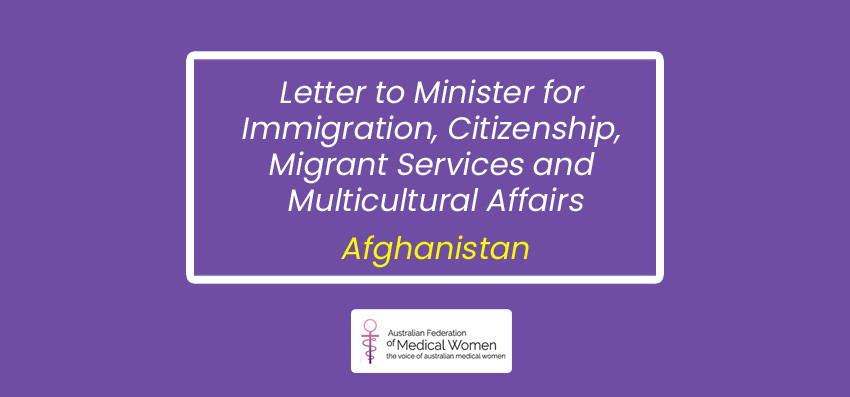Women and children face unique barriers to healthcare access
Women are typically the primary caregivers in a family, meaning they may be unable to earn an income of their own (1). Without an independent income, women are often left with little autonomy in regard to their healthcare needs. Stereotypical gender and power roles within families often exacerbate this – leaving women with little control over how income is spent, ultimately restricting both women and children’s access to healthcare (1). Even if employed, women get paid less than men, with the gender pay gap persistent at 24% globally (2). Therefore, even if women have control over their spending, healthcare access may be limited by financial resources. This is highlighted by the fact that in 2018-19, one in 25 females delayed consulting, or did not consult, a general practitioner when needed, due to cost (3).
Income aside, being a primary caregiver is undoubtably time consuming. Women do triple the amount of unpaid care and domestic work as men do, and when this is combined with paid work, women work longer hours overall than men (1). This leaves women, and consequently often also their children, with very limited time to seek health care.
These gender inequalities intersect with geographical and socioeconomic factors
Those living in rural settings frequently must travel further than their metropolitan counterparts to access healthcare, incurring transport fees and lost income if time is taken off work to travel. Thus, healthcare is more difficult and more expensive to obtain, resulting in less access and poorer health outcomes (1). From a socioeconomic standpoint, access to healthcare is much lower for poorer households, and this is particularly true for reproductive, maternal and child health services (1). Additionally, higher levels of formal education are less commonly attained by those who live in rural areas or in poverty. Less education is associated with lower health literacy, therefore augmenting barriers to healthcare access (1). In particular, women’s education levels are positively correlated with access to maternal and child health services, therefore women with lower education levels have poorer access and greater burden of disease (1).
Women have specific and complex health needs, including sexual and reproductive healthcare
This issue has been addressed by the Victorian State Government’s Sexual and Reproductive Health Strategy (2017-2020). This Strategy proposed actions to minimise barriers faced by women seeking sexual and reproductive healthcare, with $6.6 million in funding to increase access to community-based family planning services and support, increase support for women with polycystic ovarian syndrome and endometriosis, and improve sexual and reproductive health for Indigenous women and women with disabilities (4). The Strategy included the development of ‘1800 My Options’, a phone line and website providing women with information about contraception, pregnancy, and sexual health (5). This is free to access, which helps ameliorate the financial constraints that many women face. It can also be accessed easily and quickly, making lack of time less of a barrier. Thousands of women have used this service (5) and it has been considered a revolutionary way to deliver healthcare information to women. Such initiatives are a much needed step towards equitable healthcare access.
Where to from here?
The Victorian Medical Women’s Society (VMWS) advocates for continued efforts to address the barriers to healthcare access faced by women and children. Healthcare and health resources need to continue to evolve to become more accessible and current strategies to do so, such as ‘1800 My Options’, should continue to be developed, implemented and supported. Further options must be explored for reaching women who confront geographical, financial or other barriers.
A key factor to address, is that the healthcare system is fundamentally ill equipped to overcome many of these barriers. Although 70% of health and social workers are women, they occupy fewer leadership positions within the system than men (1). Without women in influential roles, decision making is less likely to take the aforementioned issues, such as those related to being the primary caregiver, into account. Thus, inequalities remain difficult to address and reconcile. Ultimately, the VMWS believes it imperative that there be equal representation of gender within healthcare management and decision making. This kind of fundamental change, paired with specific efforts such as ‘1800 My Options’, is vital in establishing equality in healthcare access.
References:
1: World Health Organisation. Breaking barriers to more gender responsive and equitable health systems [Internet]. Geneva: World Health Organisation; 2019 [cited 2020 May 11]. 40p. Available from: https://www.who.int/healthinfo/universal_health_coverage/report/gender_gmr_2019.pdf?ua=1
2: United Nations. Tackling the gender pay gap: from individual choices to institutional change [Internet]. New York: United Nations; 2016. 4p. Available from: https://www.unwomen.org/-/media/headquarters/attachments/sections/library/publications/2016/un-women-policy-brief-06-tackling-the-gender-pay-gap-en.pdf?la=en&vs=3558
3: Australian Government. The health of Australia’s females [Internet]. Canberra: Australian Institute of Health and Welfare; 2019. 50p. Available from: https://www.aihw.gov.au/reports/men-women/female-health/contents/how-does-the-health-of-females-and-males-compare
4: Victorian State Government. Women’s sexual and reproductive health: key priorities 2017-2020 [Internet]. Melbourne: Department of Health and Human Services; 2017. 28p. Available from: https://www2.health.vic.gov.au/about/publications/policiesandguidelines/womens-sexual-health-key-priorities
5: Women’s Health Victoria. Annual report 2018-2019 [Internet]. Melbourne: Women’s Health Victoria; 2019. 20p. Available from: https://womenshealthvic.com.au/resources/WHV_Publications/Annual-Report_2019.10.28_WHV-Annual-Report-2018-2019_(Fulltext-PDF).pdf


